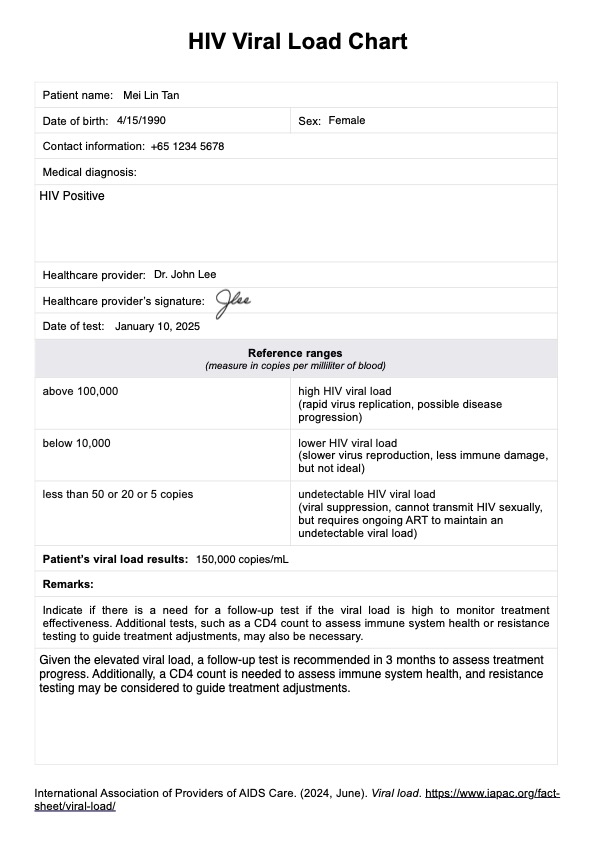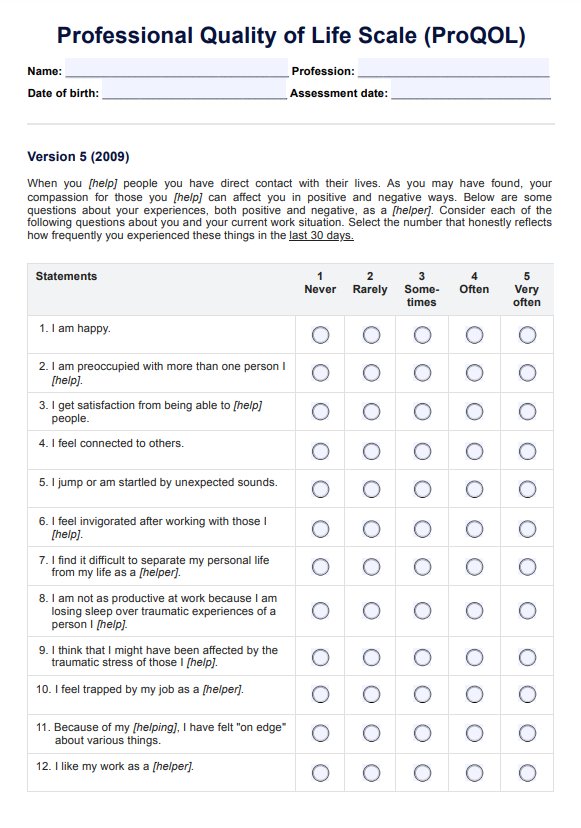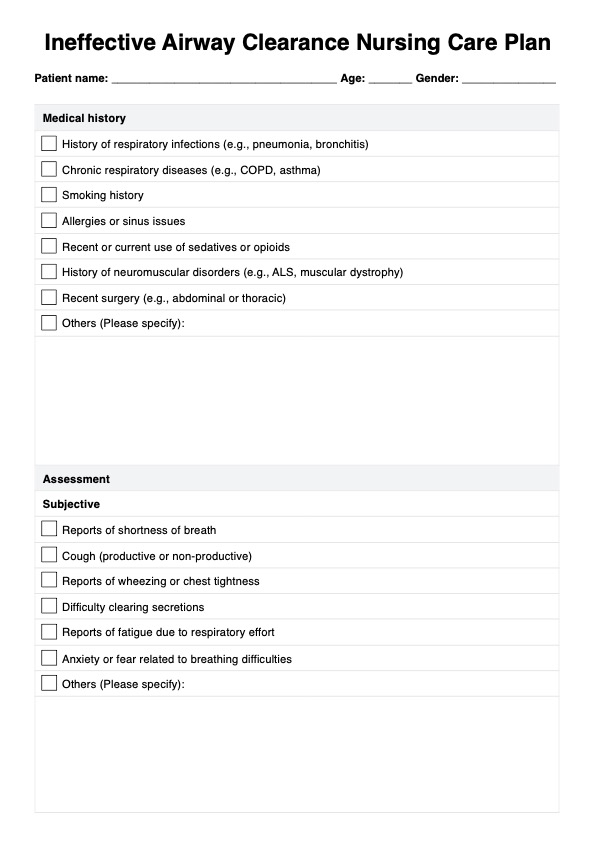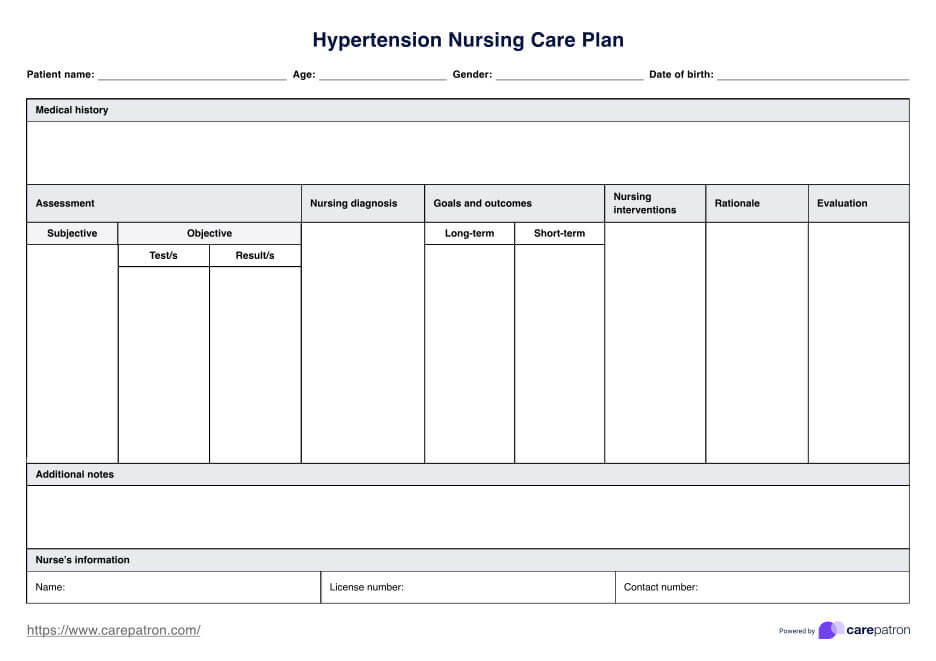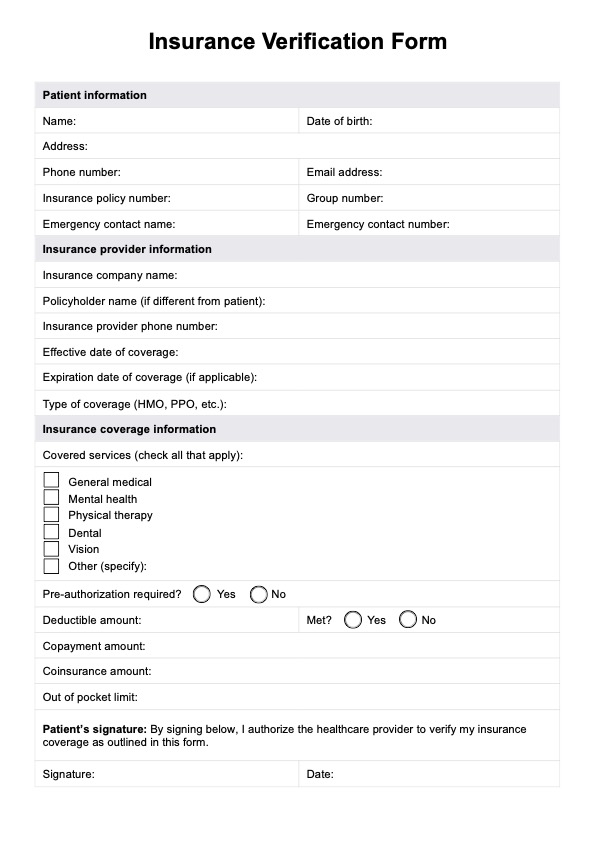HIV Viral Load
Improve HIV care with our HIV Viral Load Chart. Empower your practice with this essential tool for monitoring patient health.


What is an HIV Viral Load Chart?
Human immunodeficiency virus (HIV) is a virus that attacks the immune system, making it harder for the body to fight off infections and diseases. HIV treatment helps manage the virus, reduce its impact on the immune system, and lower the risk of HIV transmission to others. The term HIV viral load refers to the amount of the virus present in a person’s blood. It’s measured through a blood sample, and knowing this level is an important part of monitoring HIV.
An HIV Viral Load Chart is a tool used to record the results of HIV viral load tests. Other than that, it provides reference ranges that show whether the viral load is high, low, or undetectable. This information helps doctors assess how well HIV treatment is working and whether any adjustments are needed. A lower viral load means less HIV in the blood, which is good for the immune system and reduces the risk of transmission. The chart is a clear way to check progress over time and guide healthcare decisions.
HIV Viral Load Template
HIV Viral Load Example
How does this HIV viral load test chart work?
The HIV viral load test chart helps you monitor a patient's progress in managing HIV. Here's how to use the chart effectively:
Step 1: Download the template
You can access the HIV Viral Load Chart template from this guide. Click "Use template" to open it within the Carepatron platform, where you can customize this tool according to your needs. You can also click "Download" to get a free fillable PDF copy of this form. Within this guide, we've also provided a sample for your reference.
Step 2: Input patient information and test results
Once you have the chart, enter the patient's information along with their HIV viral load results from their blood sample into the template. Be sure to use the most recent test data to ensure accuracy.
Step 3: Compare with reference ranges
After entering the results, compare them to the reference ranges provided in the chart. These ranges indicate whether the viral load is undetectable, low, or high. This step will help you assess how well the patient's treatment is working.
Step 4: Adjust treatment as needed
Based on the comparison, make any necessary adjustments to the patient’s treatment plan. If the viral load increases or not decreasing as expected, further interventions or tests may be required to improve the treatment outcome. Regular monitoring will help guide the best approach to care. You may use the "Remarks" section to document these details.
When would you use this chart?
The HIV Viral Load Chart is an indispensable tool in HIV management. But when exactly is the right time to utilize this resource? Let's delve into the specific scenarios where this chart becomes invaluable:
Initial diagnosis
Upon confirming an HIV-positive status, it's crucial to determine the viral load. This chart aids in tracking the initial count, which is pivotal for subsequent treatment plans.
Monitoring treatment efficacy
As patients commence antiretroviral therapy (ART), regularly updating the chart helps assess the effectiveness of the treatment. A decreasing viral load typically indicates a positive response to the medication.
Assessing disease progression
Despite treatment, a consistent increase in viral load might indicate disease progression or potential resistance to the current medication. Referring to the chart before switching medications or making significant alterations to the treatment regimen can provide insights into the patient's history and response to previous treatments.
Post-exposure prophylaxis (PEP) evaluation
For individuals who've been exposed to potential HIV infection and are on PEP, this chart can be used to monitor their viral load, ensuring the effectiveness of the prophylaxis.
Potential results
Understanding the reference ranges from an HIV Viral Load Chart is crucial in managing and treating HIV. Typical results of the HIV viral load test are categorized into (International Association of Providers of AIDS Care, 2024):
- High HIV viral load: A high viral load is above 100,000 copies/mL (rapid virus replication, possible disease progression).
- Low HIV viral load: Below 10,000 copies/mL (slower virus reproduction, less immune damage, but not ideal).
- Undetectable HIV viral load: Less than 50, 20, or 5 copies/mL (viral suppression, cannot transmit HIV sexually, but requires ongoing ART to maintain an undetectable viral load).
Understanding these results is pivotal in the journey of HIV management. For example, when there is a detectable viral load in the results, it helps guide treatment decisions, provide insights into the disease's progression, and offer a glimpse into the patient's overall health. As a healthcare professional, always ensure that patients are well-informed about their results, empowering them to participate actively in their care journey.
Reference
International Association of Providers of AIDS Care. (2024, June). Viral load. https://www.iapac.org/fact-sheet/viral-load/
Commonly asked questions
An HIV viral load test measures the amount of HIV RNA in your blood. If your viral load is undetectable, a person cannot sexually transmit HIV to their partner, even though the virus is still in their body.
Having a low viral load doesn't protect against other sexually transmitted infections (STIs). It's important to use protection to prevent the spread of STIs, even if your HIV viral load is low.
HIV tests are important when someone is at risk of exposure to the virus, such as after unprotected sex, sharing needles, or if they have a partner with HIV. They're also crucial for people who are pregnant, to prevent mother-to-child transmission, and for those starting or changing HIV treatment to monitor viral load and guide care.



